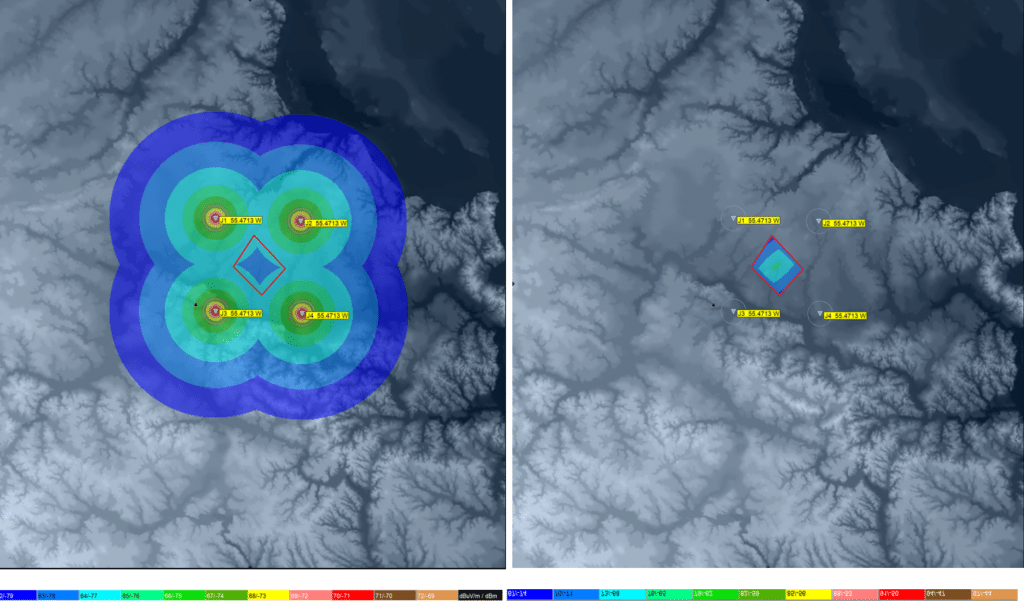Controlled Radiation Pattern Antennas (CRPAs) are the latest evolution to counter anti-GNSS jamming by cancelling out signals through beamforming. ATDI's HTZ Warfare features a “GNSS -CRPA Jamming map” function that allows users to plan jamming deployments to counter enemy tactics, as well ensuring uninterrupted GPS reception by estimating the enemy’s GPS jamming capacity.
To ensure effective jamming, more jammers are required than antenna elements in the CRPA. For example, jamming a four-element antenna requires at least four jammers. Those coverage outputs are applied to a given area needing protection by using a vector polygon, allowing the user to determine and modify the area to consider.
The GNSS receiver configuration manages the number of elements including null and beam steering, spacing, antenna beamwidth, antenna gain and beamforming thresholds. It also incorporates parameters like GPS frequency, antenna height and jamming thresholds. Jammer settings include the maximum distance from each jammer to limit calculations, an option to consider composite coverage or to use existing calculations, and the ability to determine which jamming signals to reject.
Once configured, the software calculates the jammer's effective coverage area against the specific threat defined. HTZ uses two methods to apply these calculations:
Method 1 considers CRPA jamming by acknowledging challenges with dynamically generating radiation patterns. This suits Fixed Radiation Pattern Antennas (FRPAs) or CRPAs, for which NULL steering is automatically configured, depending on the strongest jamming signal exceeding the defined threshold.
Method 2 enables users to customise the CRPA's jamming resistance. To define the beam suppression for Null steering, the "statistic values" button can be used to assign rejection values to elements based on their spatial placement from the main jamming signal. These values are applied to each Null' Beam suppression. Users can also define this in their data. The outputs from both methods illustrate where each mapped point is jammed, rendering a CRPA receiver unable to receive a GNSS signal. The images shown below display the composite jammer coverage and CRPA effective coverage.

Fig. 1 Composite Jammer coverage + CRPA effective coverage.
GNSS - CRPA Jamming map: CRPA Jamming stands for GPS jamming performed on any GPS receiver, including Fixed and Controlled Radiation Pattern Antennas (FRPA and CRPA). Jamming involves emitting radio frequency signals on the same frequencies as those used by the guidance systems of the munitions, thereby interfering with their ability to receive accurate positioning information. This interference can cause the munitions to miss their intended targets or become ineffective. CPRA jamming has proven to be an effective electronic warfare tactic used to counter the effectiveness of precision-guided munitions on the battlefield.
Watch CRPA coverage calculation in HTZ warfare:



